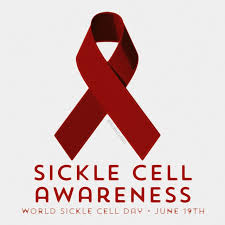
World marks Sickle Cell Day (2)
Most children with sickle cell disease have anaemia and may develop one or more of the following conditions and symptoms as part of the disorder:
Advertisement
Acute chest syndrome - trapping of red blood cells in the lungs.
Aplastic crisis - Bone marrow temporarily slows its production of RBC's due to infection.
Hand-foot syndrome (dactylitis) - Painful swelling of the hands and feet of children below two years of age.
Infection - Children with sickle cell anaemia are at an increased risk for certain bacterial infections.
Painful crises - Can occur in any part of the body and may be caused by cold or dehydration or stress.
Splenic sequestration crises - The spleen becomes enlarged by trapping the abnormal RBC's. This leads to fewer cells in the general circulation and worsens the anaemia with sometimes fatal consequences.
Stroke - Poor blood blow can occur in the brain when sickle cells block small blood vessels. This may lead to stroke.
Other possible complications can include: leg ulcers, bone and joint damage, gallstones, kidney damage, painful prolonged erections in males (priapism), eye damage and delayed growth.
Besides a bone marrow transplant, there is no known cure for sickle cell disease.
Transplants can become a complicated procedure and currently not routinely done in Ghana.
However, even after bone marrow transplant the disease may be cured in the individual but the sufferer can still transmit to his/her children as the defect is locked on the genes.
Even without a cure, children with sickle cell disease can lead very normal lives. Certain types of medication can be taken to help manage the pain, and immunizations can prevent infections. Infants and young children usually require two daily doses of penicillin, until they are at least five years old. They should also be fully immunized with all regular childhood vaccinations. Daily vitamin supplements, such as Folic acid which help in new red cell production are also advised.
There are other drugs that increase fetal haemoglobin(HbF), a relatively better haemoglobin . An example is Hydroxyurea, which interferes with the sickling process and makes red blood cells less sticky.
This helps decrease the number and intensity of painful episodes and other complications. Children with SCD should also drink plenty of fluids and get plenty of rest.
Early detection of this condition is priceless, fortunately, the national newborn screening for this condition is about taking off. It used to be done only in Komfo Anokye Teaching Hospital but there are plans to scale it up.
Korle Bu will soon start its newborn screening for sickle cell disease.
The introduction into our expanded programme of immunization, of the pneumococcal vaccine is a big plus for this condition.
Detection of risk factors for stroke is done with transcranial Doppler ultrasound.
Perhaps the single most important measure is educating the populace about knowing their sickle cell status while in school before they start developing feelings for the opposite sex.
In this respect, certain organisations have been helpful particularly, the Sickle Cell Condition Advocates (SICCA) which is spearheading nationwide education and testing of the populace as well as establishing sickle cell clinics nationwide.
However, we all have a part to play. So wherever we are, let's spread this news on sickle cell awareness on Monday the 19th. Let's update our social media profiles focussing on sickle cell disease.




